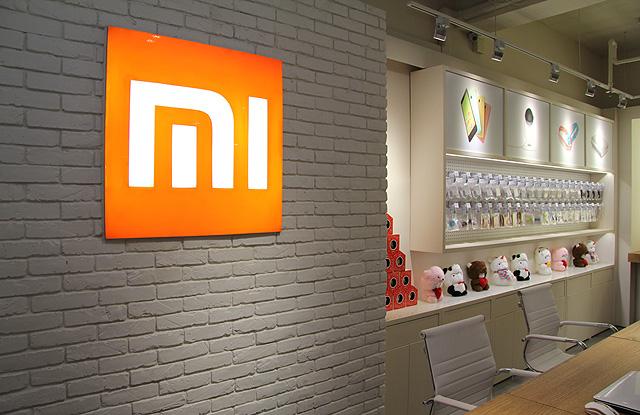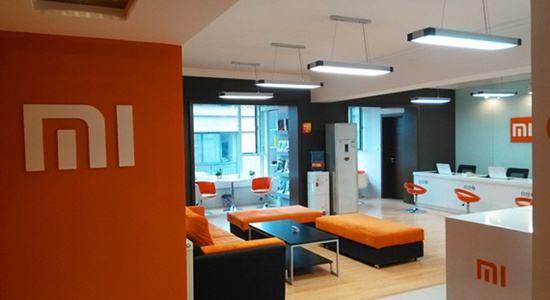OFweek smart home network news From October 2015 test water-based contemporary mall first millet home, on May 28, 2017 the country's 100th landing in Shanghai Vivo City. For Xiaomi, known for its “Internet thinking,†Xiaomi’s home is a rarity. From 1 to 100, the significance may not be limited to Xiaomi himself.
For the current trend of the times, especially the opportunities and challenges of consumer electronics retail, this may also be of great reference value.
However, when asked about the feelings, Lin Bin, Xiaomi’s co-founder and company president, blurted out: tired and tired, this is a brand-new learning journey.

Millet's new retail transcript
Lin Bin, the president of the company, is “tired†and returns the answer for one hundred stores in a year. The data behind the answer may be constantly referenced by the industry in the future.
The first is turnover. Xiaomi’s three best-selling stores are Shanghai Joy City, David City Zhengzhou, and Beijing Wucai City. The Wucaicheng Store, which is located at the headquarters of Xiaomi in the data, is located on the ground floor and covers an area of ​​250 square meters. It was formally opened in March 2016. The annual revenue for 2016 was 100 million, and the current average monthly revenue was stable at 9 million.
Followed by the effectiveness of data. The current stability is 260,000 yuan per square meter, which is lower than Apple's 400,000 yuan, but it is already higher than the luxury brand Tiffany's 200,000 yuan.
Related to business and ping effectiveness are cost data. At present, Xiaomi controls the cost of single store within 7%, including the headquarters, the cost is 9%. This means that for a 100 yuan product, Xiaomi will be able to achieve a flat rate as long as it sells for 109 yuan.
Of course, the biggest cost of opening the store was in the decoration. After a year's exploration, Xiaomi realized the renovation from the first 28 days, and it has evolved to an average of 3 days and an average investment of 500,000 yuan.
However, the reason why 100 Xiaomi's homes are called “milestones†is not limited to costs and revenues, but also that Xiaomi has achieved a tie-breaking and micro-profit under the premise of single-digit gross margins. - This is not an easy task in the consumer electronics industry where offline information is sold.
Millet home experience: replicable site selection
Talking about the reasons behind this, Xiaobin Linbin, the president of Xiaomi, has shared two major experiences.
One is site selection. When asked about the first element of the offline channel, Lin Bin's answer was "location, location, and location."
In the course of this year's 100 stores, Xiaomi’s home has spread to 43 cities across the country, and Lin Bin has attended most of the opening cuts. He told reporters that the most important reason for coming to the scene personally is to observe the location of the study and check out the shopping malls.
“Location selection is not simple, the city’s location, regional location, shopping district location, mall location, floor location, entrance location, etc. will all be directly related to the height of a store.†Lin Bin also added that in the scoring of the shop, "Location" and "Team" directly determine the final result of each store.
In fact, unlike the ideas inherent in thinking and impression, site selection is not a goal that can be achieved with “money willâ€. Many malls have their own logic. In general, the best location to look at the brand, the image is the first element, so Apple, Uniqlo, HM, luxury goods, street fashion, etc., can often get a good position, and most mobile phone manufacturers, most Live on the 4th and 5th floors.
This is also the impression that Xiaomi made in the past year. From the early days of being a mobile phone shop and electronic product shop, Lin Bin said that the line has already begun accepting millet as a "lifestyle" and "lifestyle category."
This “lifestyle†impression is also closely related to the secret of Xiaomi’s home’s profit and loss. Behind the two are the millet category, which directly determines the conversion rate and return rate of Xiaomi’s home.
In terms of this data, the conversion rate of Xiaomi's home is currently 20%, with an average of 2.7 pieces of shopping per person, while Xiaomi's home has more than 300 kinds of SKUs.
Lin Bin believes that this is exactly where the barriers to competition of the millet house lie. Since 2013, Xiaomi has successively deployed Internet of Things and smart hardware through internal incubation and investment, and has had more than 70 “company companies†in four years.
These eco-chain companies have ensured the supply of Xiaomizhijia's category, but also because of the unity of design language and pricing thinking, the price is not high, and they have closed their eyes to buy, and quality control has the strength to bring a steady stream of old Customers, repeat customers.
Lin Bin said that if other companies want to copy this model of millet, it may take 3 or 4 years, and because of the vertical depth of millet eco-chain companies, their respective accumulation in the technical field, has achieved a unique product Sex, friends start from scratch, the threshold is already high.
However, even if the Xiaomi ecological chain can provide more categories, it does not mean that the Plenary will appear in the “House of Xiaomiâ€. Lin Bin told Sina Technology that the selection logic of Xiaomi's home is divided into two aspects. First, based on the optimization of Xiaomi.com, those high-frequency, high-purchase categories will win; The preferences, such as the popular TS sunglasses and so on.

In fact, from the logic and method of selecting products, we can also see the trial of Xiaomi's home in the new retail: online data as a guide, and offline channels to provide feedback.
Millet's Second Battlefield
Of course, this seems to be logically self-consistent at the moment, but if it is put a year ago, it may not be a natural way and result.
In fact, Xiaomi's home from scratch seems to be an unexpected "re-starter."
After the establishment of Xiaomi in 2010, Internet thinking was invincible. Xiaomi also quickly built a well-trafficked online channel "Xiao Mi Wang" relying on mobile phones and other products, and almost all of the products rely on online, in order to eliminate the line. High channel costs.
When it was time, Xiaomi took the top spot on China's smart phone and was only behind Apple and Samsung globally. However, since 2015, with the decline of Internet users' dividends, online share growth has slowed down, and the Xiaomi model has begun to encounter difficulties. It was during this period that Xiaomi was overtaken by vendors such as Huawei, OPPO, and vivo that controlled offline channels. Out of the top five, it fell to sixth in the world.
After encountering high-speed growth, it is still a competitive disadvantage caused by traditional offline channels. This is certainly not the situation that Xiaomi once predicted when it started its business.
Xiaomi investors Liu Qin and Lei Jun’s friends He Xiaopeng expressed the same opinion to reporters. They said that the reason why they favor millet ventures is entirely because of the thinking and judgment shown by Lei Jun. Before the start of business, Lei Jun’s potential for millet may be five years ago. All situations encountered will have clear perceptions and judgments.
However, regarding offline channels, this is obviously an unexpected situation.
So until October 2015, the first millet house was converted from a store of after-sales significance, and the team also saw a dramatic increase of 1,000 from the 300 originally sold. Zhang Jianhui, vice president of Xiaomi's home, also stated that Xiaomi's home team is almost the only team within Xiaomi who has KPI assessment.
Millet's emphasis on this matter is not difficult to glimpse, because the partner who led the team, it is the Xiaomi No. 2 figure - the president Lin Bin. Most of his work before may be more macro, but since October 2015, Lin Bin's most concentrated efforts have been focused on the construction of Xiaomi's home.
Now, the millet's president has handed over a 100-year response to the one-year report, in addition to the standard for quick copying and the profit model under low gross profit.
If we say that the start-up of millet started in 2010 has achieved results through the Internet as the core of the first battlefield, the second front line opened in 2015, which is the core of the offline line, is taking Xiaomi out of the growing plight.
After the sluggish growth started at the end of 2015, according to statistics from the international data agency IDC, Xiaomi began to recover in the first quarter of 2017, which was a 21.6% increase from the previous quarter. The worst time was passing.
The increase in mobile phone sales driven by Xiaomizhijia is no longer obvious. The most typical example is the fifth-tier city of Hebei Qinghe, where Xiaomi House sells 1,200 Xiaomi mobile phones every month. So it is hard to imagine how the millet mobile phone sales will be driven by the completion of 1,000 millet homes in the next three years.
However, the larger drive may come from a new round of technological revolutions - artificial intelligence is accelerating more non-networked users to achieve interoperability, which means that in addition to mobile phones, there will be more devices as traffic portals.
Lei Jun had previously said at the exchange meeting that the layout of artificial intelligence had already been prepared through the Internet of Things. “The era of artificial intelligence began, and many companies came to Xiaomi to cooperate, and Xiaomi is the most powerful company in the world. This was also started three years ago. IOT's modules, IOT's embedded systems, and IOT's control center were included more than three years ago. They include investment and incubation of more than 70 companies. Currently, only Xiaomi's family is connected to the Internet standard. ."
At present, Xiaomi claimed to have achieved the interconnection of more than 50 million smart devices, but this may only be the beginning, because the first wave of users is mostly "internet users", and about half of the Chinese population is not yet Access to the Internet - This is a great opportunity and an opportunity for Xiaomizhijia.
Perhaps it is still too early to talk about the significance of the millet house for Xiaomi, but the significance of the “second battlefield†that Millet House will play is self-evident.
Coincidentally, the start of Xiaomi's home is strikingly similar to Xiaomi's.
At least they all started in the contemporary mall: Xiaomi was founded in 2010, but the decision to start was from Lei Jun’s 40th birthday party in 2009. At the time of the modern mall, Lei Jun claimed to understand two things. One is Take advantage of the situation, and the other is human desire.
He decided to start again and open Xiaomi Technology's fever trip.